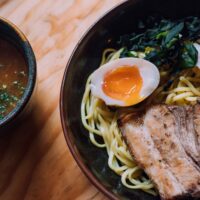Pączki, a type of deep-fried doughnut filled with sweet filling and covered with powdered sugar or icing, are one of Poland’s most cherished culinary traditions. An emblem of Polish culture, the pączki’s rich history and enduring popularity offer a fascinating lens through which to explore the country’s cultural heritage and gastronomic innovation. This article delves into the art and soul of this beloved Polish dessert, tracing its historical roots, uncovering its cultural significance, and celebrating the diversity and innovation found in its modern variations.
The history of pączki: How did it begin?
Pączki have a long and storied history, dating back several centuries in Poland. These sweet treats are believed to have first arrived in Poland during the Middle Ages when they were brought over from the East by travelling merchants. Initially, they were a luxury item, only enjoyed by the rich and the aristocracy. Their popularity grew over time, eventually becoming a staple across all social classes.
The most significant boost to their popularity, however, came with the advent of Fat Thursday, or Tłusty Czwartek in Polish, a tradition observed on the last Thursday before Lent. With the strict fasting rules of Lent approaching, Poles saw this as an opportunity to enjoy these calorie-rich treats one last time. This tradition has persisted to this day, with Poles consuming millions of pączki on this special day each year.
Cultural significance of pączki in Polish society
The cultural impact of pączki goes beyond their delicious taste. For many Poles, these doughnuts represent a connection to their heritage and a symbol of national pride. They are an integral part of many Polish celebrations, not just Tłusty Czwartek but also events like weddings, baptisms, and even Christmas.
More importantly, pączki are a testament to the Polish spirit of resilience. Despite historical upheavals and periods of hardship, this humble doughnut has stood the test of time, becoming a symbol of continuity and perseverance for the Polish people.
The traditional recipe of Polish pączki
At the heart of every pączki is a traditional recipe, passed down through generations. Unlike the light and fluffy doughnuts familiar in many western countries, Polish pączki are known for their rich and dense dough. This is due to the addition of ingredients like eggs, butter, and sometimes even grain alcohol, which gives the doughnuts a unique texture and flavour.
The filling is another crucial component of the pączki. Traditional fillings include rosehip jam, plum preserve, and custard, but variations can be found based on personal preferences and regional traditions. The doughnut is then deep-fried until it achieves a golden-brown colour, before being dusted with powdered sugar or glazed with icing.
The preparation and enjoyment of pączki is often a family affair, with recipes passed down from generation to generation. Many families even have their own secret ingredients or techniques that make their pączki unique.
Varieties of pączki found across Poland
Although the traditional pączki recipe remains a favorite, regional variations throughout Poland have led to an exciting diversity of flavors and styles.
- In the Malopolska region, for instance, it’s not uncommon to find pączki filled with a sweet cream made from sheep’s milk, a nod to the area’s rich pastoral history.
- In Szczecin, on the other hand, doughnuts are often stuffed with a special type of red jam made from local forest fruits, offering a distinctly tart counterpoint to the sweetness of the doughnut.
- In Warsaw, you may stumble upon pączki filled with advocaat, a creamy liqueur that adds a sophisticated and unexpected twist.
This regional variety adds to the richness of the pączki tradition, allowing locals and visitors alike to discover new and delightful variations of this beloved treat.
The pączki-making process: An art handed down generations
Crafting a perfect pączki is a labor of love, often requiring years of experience and meticulous attention to detail. The dough, which includes eggs, sugar, yeast, milk, and sometimes even a splash of alcohol, must be expertly mixed and allowed to rise at just the right temperature. The frying process is equally crucial, requiring careful timing and temperature control to achieve the perfect golden-brown color and deliciously crisp exterior.
But the art of making pączki isn’t just about the technical details. It’s also about the traditions and memories associated with this special treat. For many Poles, the process of making pączki is steeped in nostalgia and familial love, reminding them of cherished moments spent in the kitchen with parents or grandparents, learning the secrets of this revered culinary tradition.
Pączki Day: Celebrating Poland’s Beloved Doughnut
While pączki are enjoyed throughout the year, their popularity peaks on Tłusty Czwartek, or Fat Thursday. This celebration, which takes place the Thursday before Lent, is the busiest day of the year for bakeries across Poland. Poles queue up in the early hours of the morning, braving the chilly winter weather to get their hands on these delicious treats.
Fat Thursday is more than just an excuse to indulge in delicious doughnuts. It’s a day that brings communities together in a shared celebration of a beloved national tradition. On this day, no matter where you are in Poland, the sweet scent of frying dough and the warm glow of bakery windows serve as a testament to the enduring love for pączki.









